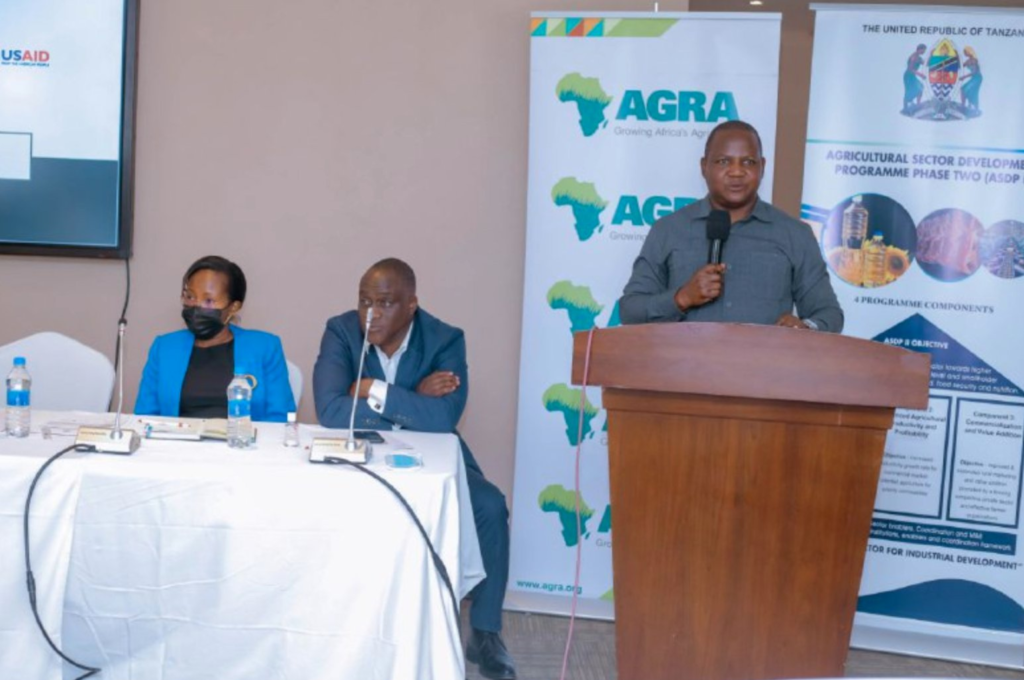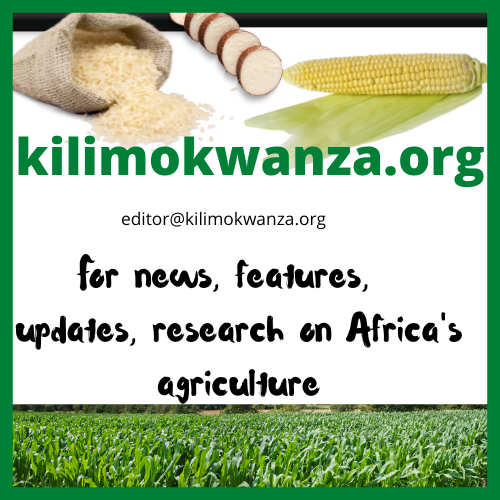Two twin studies point the-way-forward-for-agriculture in Tanzania
In the bustling city of Dar es Salaam, under the warm Tanzanian sun, a crucial workshop unfolded on the 17th of December, 2021. The focus was the Joint Agriculture Sector Review (JSR) report, a document set to shape the future of Tanzania’s agricultural landscape. This significant gathering was not just another bureaucratic assembly; it was a beacon of hope, a testament to Tanzania’s commitment to revolutionizing its agricultural sector.
At the helm of this pivotal moment was Mr. Kaspar Mmuya, the Deputy Permanent Secretary of the Prime Minister’s Office. His words echoed through the halls, emphasizing the indispensable role of private sector investment in Tanzania’s journey towards industrialization. He urged the private sector to rise to the occasion, to play a more substantial role in providing year-round raw materials for the industrial sector. This challenge was not just a call to action but a recognition of an underlying issue – the underutilization of Tanzania’s agro-industrial capacity.
The JSR report, scrutinized in this workshop, was not just a compilation of data. It was a result of a consultative and evidence-based approach, involving two complementary studies: the Agriculture Sector Review (ASR) and the Agriculture public expenditure review (AgPER). These studies were not just academic exercises; they were reflections of Tanzania’s agricultural narrative from 2017/2018 to 2020/2021.
Four national consultants – Professor Deogratius Mushi, Professor Beatus Kundi, Mr. Selemani Omari, and Dr. Hussein Nassoro – had worked tirelessly, analyzing and interpreting data, to bring this report to life. They were supported by the Alliance for a Green Revolution in Africa (AGRA), the Food and Agriculture Organization of the United Nations (FAO), and the World Bank. Their collaboration was a symphony of expertise, aiming to elevate Tanzania’s agricultural sector to new heights.
Mr. Vianey Rweyendela, AGRA’s Country Manager, emphasized the critical role these studies would play in shaping Tanzania’s agricultural strategies. Their findings were not just statistics on a page; they were the keys to unlocking Tanzania’s agricultural potential.
The ASR, covering the period from 2017/2018 to 2020/2021, painted a picture of progress. Dr. Mushi highlighted the improved provision and utilization of farm inputs and services, an uptick in crop production for both food and cash crops, and the alignment of the agricultural sector with the national vision. Yet, this progress was not without its challenges. Inadequate resources for implementing the Agricultural Sector Development Programme Phase II (ASDP II), low productivity levels, and unmet agricultural trade targets loomed as formidable obstacles.
Mr. Selemani Omari shed light on the financial aspect, noting that despite increased budget allocations for agriculture, government spending in this sector remained a meager 2.9 percent of the total budget. This figure was a stark reminder of the gap between aspirations and reality, between the plans laid out and the resources allocated.
The recommendations from the ASR and AgPER were clear and urgent. There was a dire need for enhanced resource allocation, particularly in high-return areas like agricultural research, extension services, irrigation, and resilience building for climate change adaptation. Moreover, a better tracking system for private sector investment and off-budget agricultural expenditures was crucial for informed decision-making.
At the core of these discussions and plans was the ASDP II, a program designed to transform Tanzania’s agricultural systems, to enhance the productivity and income of smallholder farmers. AGRA’s role in supporting this program was pivotal, ensuring that the benefits reached the grassroots level, where they mattered the most.
As the workshop concluded, the stakeholders left with a sense of purpose and a roadmap for the future. The challenges were many, but so were the opportunities. The JSR report was more than just a document; it was a catalyst for change, a blueprint for a brighter, more prosperous future for Tanzanian agriculture. The path ahead was clear, and the journey, though arduous, was one filled with promise and potential.


